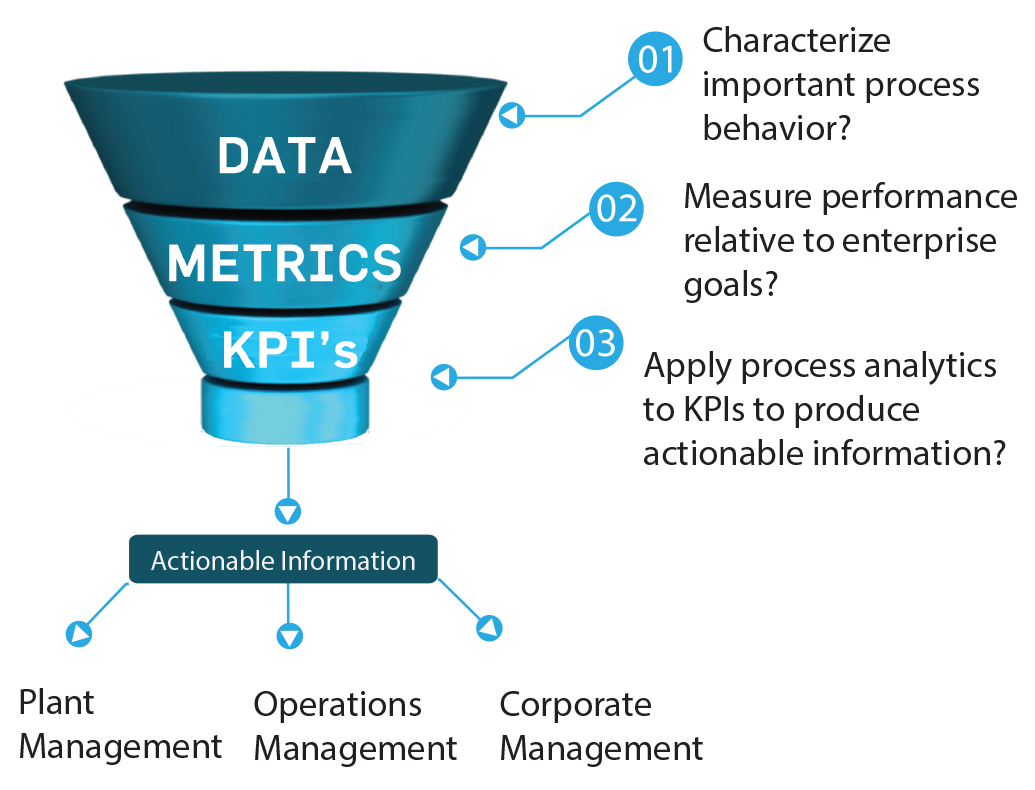What’s the Difference Between a Metric and a KPI?

In business performance management, two terms often come up interchangeably: metrics and Key Performance Indicators (KPIs). While both are related to measurement and data-driven decision-making, they are not the same thing. Confusing metrics with KPIs can dilute focus, create reporting overload, and prevent organizations from understanding what truly drives success.
This article explores the difference between metrics and KPIs, why the distinction matters, and how organizations can leverage both effectively to make better decisions and achieve their goals.
Defining Metrics
A metric is any quantitative measure used to track performance, activity, or progress. Metrics can cover a wide range of business areas, from sales revenue to website traffic, production costs, or even the number of training hours employees complete.
Some examples of common business metrics include:
-
Monthly website visits.
-
Sales revenue per quarter.
-
Average response time for customer service.
-
Number of new product features launched.
-
Employee turnover rate.
Metrics are valuable because they provide data visibility. However, not every metric carries equal weight in driving strategy. Many metrics simply reflect operational activity without being directly tied to core objectives.
Defining KPIs
A Key Performance Indicator (KPI) is a specific type of metric that is directly aligned with an organization’s strategic objectives. The keyword here is “key.” Unlike general metrics, KPIs highlight the critical few measures that signal whether the organization is achieving its goals.
For example:
-
If the strategic objective is customer loyalty, a KPI might be the Net Promoter Score (NPS).
-
If the strategic objective is financial growth, a KPI might be year-over-year revenue growth rate.
-
If the objective is operational efficiency, a KPI might be on-time delivery percentage.
KPIs are therefore strategic in nature, while metrics are broader and may or may not be strategically important.
Metrics vs. KPIs: The Key Distinctions
-
Scope
-
Metrics: Cover a wide range of activities, processes, and outcomes.
-
KPIs: Focus only on those that are mission-critical to strategic success.
-
-
Relevance
-
Metrics: Provide data but may not always inform decision-making.
-
KPIs: Are selected precisely because they influence key decisions.
-
-
Hierarchy
-
Metrics are often inputs or supporting data.
-
KPIs sit at the top of the hierarchy as the most critical indicators.
-
-
Interpretation
-
Metrics answer “what is happening?”
-
KPIs answer “are we achieving our strategic objectives?”
-
An Analogy: Metrics as the Forest, KPIs as the Trees
Think of metrics as the forest—all the data points available to you. KPIs are the most important trees that matter for survival. While you can track many metrics, only a few KPIs will tell you whether your organization is truly moving in the right direction.
For instance, a marketing team might track dozens of metrics (social media likes, impressions, email open rates), but its KPIs might only be cost per lead and conversion rate, because those directly link to business growth.
Why the Distinction Matters
Many organizations fall into the trap of tracking too many metrics without identifying true KPIs. This creates information overload and can lead to poor decision-making. Leaders might be impressed by “big numbers” (like total page views) without recognizing that those numbers don’t necessarily align with revenue or retention goals.
By clearly distinguishing KPIs from metrics, organizations can:
-
Focus attention on what matters most.
-
Reduce wasted time and reporting noise.
-
Create accountability by linking performance to strategic priorities.
-
Improve decision-making with clarity and precision.
How to Identify KPIs from Metrics
The process of distinguishing KPIs from general metrics requires a structured approach:
-
Start with Strategy – Clarify your organization’s top objectives.
-
List Metrics – Capture all potential data points you track.
-
Filter for Relevance – Identify which metrics directly indicate success in your objectives.
-
Prioritize the Few – Choose no more than 3–7 KPIs per department to maintain focus.
-
Set Targets – Ensure KPIs are measurable, time-bound, and benchmarked.
For example:
-
Objective: Increase profitability.
-
Metrics: Revenue, expenses, number of customers, average transaction value.
-
KPIs: Net profit margin, customer lifetime value, revenue growth rate.
Balancing Metrics and KPIs
Both metrics and KPIs are necessary. Metrics provide context, while KPIs provide focus. Imagine driving a car:
-
Metrics are the various gauges on your dashboard (fuel level, oil temperature, tire pressure).
-
KPIs are the speedometer and GPS location—they tell you whether you’re moving in the right direction and at the right pace to reach your destination.
Without metrics, you lack detail. Without KPIs, you lack direction. The key is integration.
Avoiding Common Pitfalls
When working with metrics and KPIs, organizations should avoid:
-
Tracking too many KPIs – Not every metric is a KPI. Limit the number for clarity.
-
Focusing only on lagging indicators – Balance KPIs with leading indicators for future insights.
-
Ignoring context – Metrics without benchmarks or targets provide little meaning.
-
Failing to align across teams – Different departments should connect their KPIs to organizational goals, not operate in silos.
Conclusion
While metrics and KPIs are related, they play very different roles in performance management. Metrics represent all the data you can measure, while KPIs represent the strategic subset that drives business success. By learning to distinguish between the two, organizations can avoid drowning in data, focus on what truly matters, and create a performance measurement system that leads to meaningful growth.
In short: all KPIs are metrics, but not all metrics are KPIs. Understanding this difference is the key to smarter decision-making.
- Arts
- Business
- Computers
- Spiele
- Health
- Startseite
- Kids and Teens
- Geld
- News
- Recreation
- Reference
- Regional
- Science
- Shopping
- Society
- Sports
- Бизнес
- Деньги
- Дом
- Досуг
- Здоровье
- Игры
- Искусство
- Источники информации
- Компьютеры
- Наука
- Новости и СМИ
- Общество
- Покупки
- Спорт
- Страны и регионы
- World


